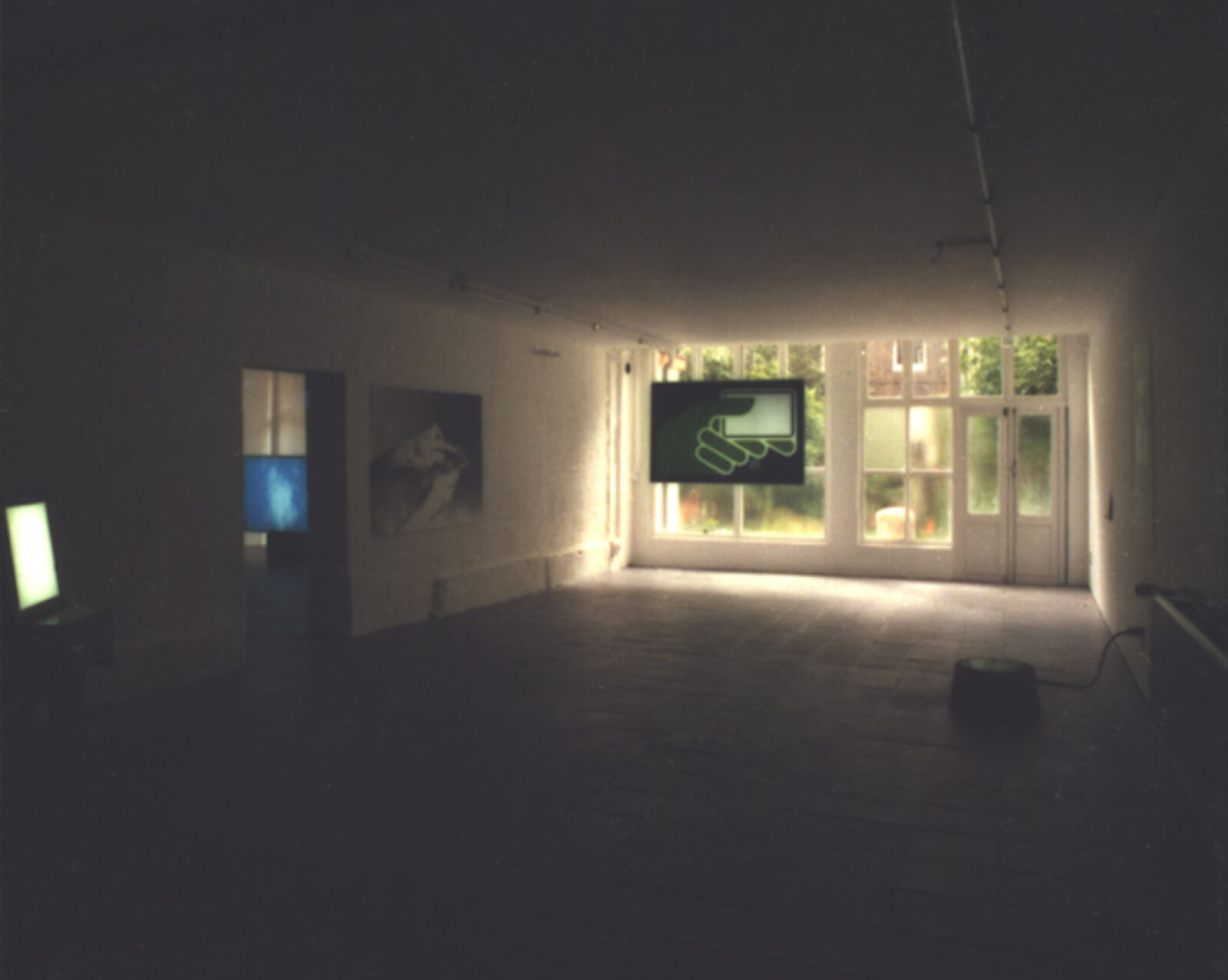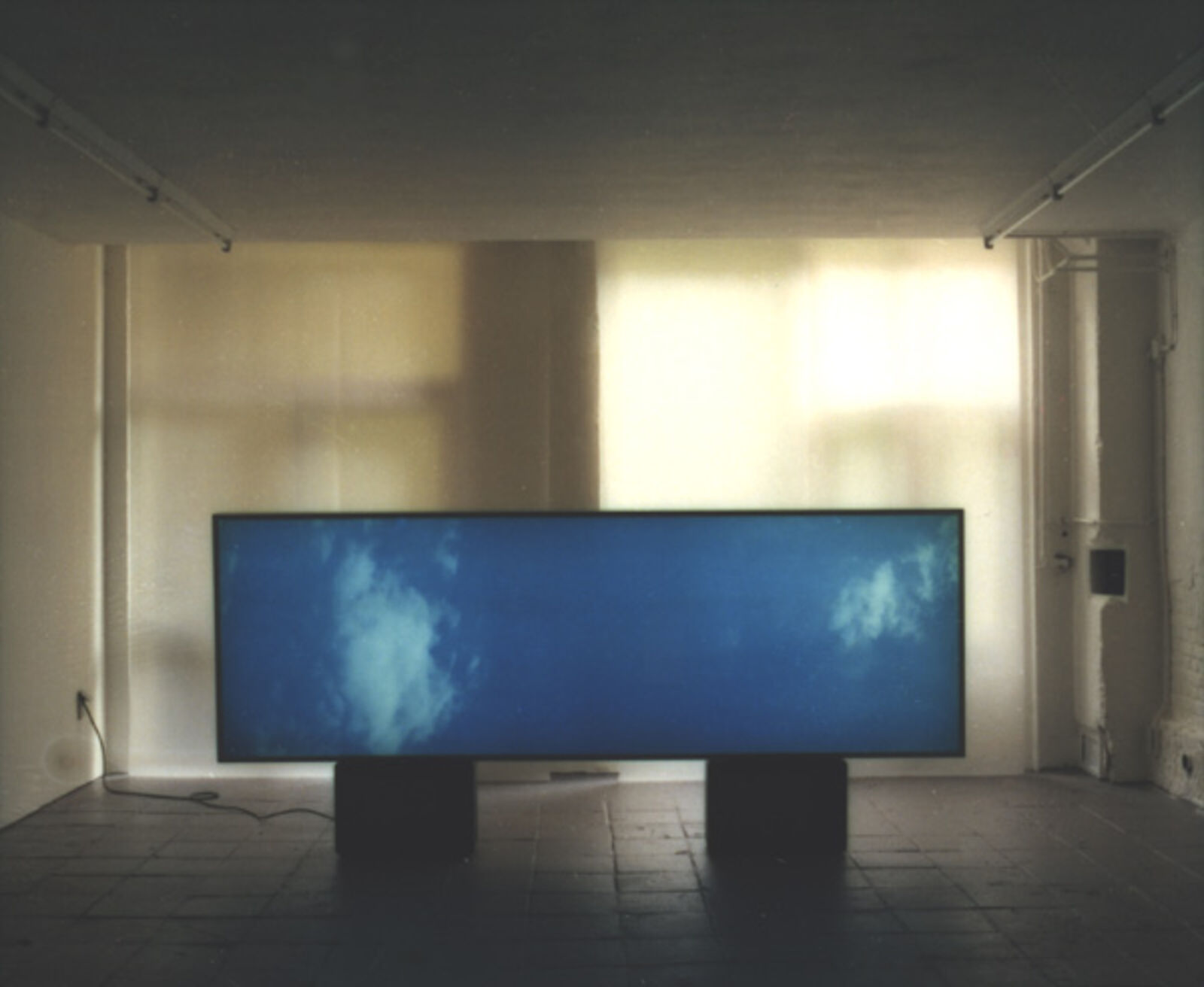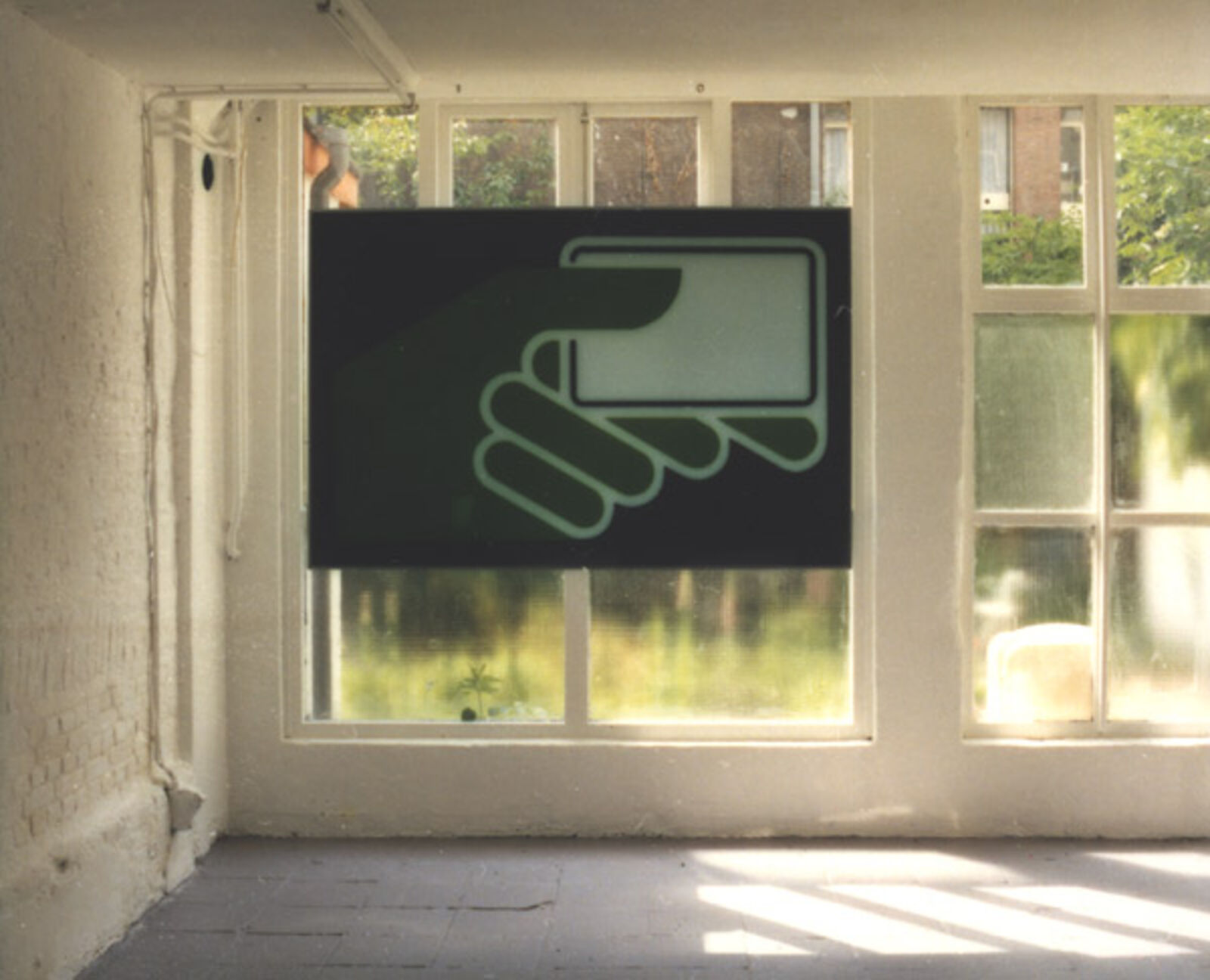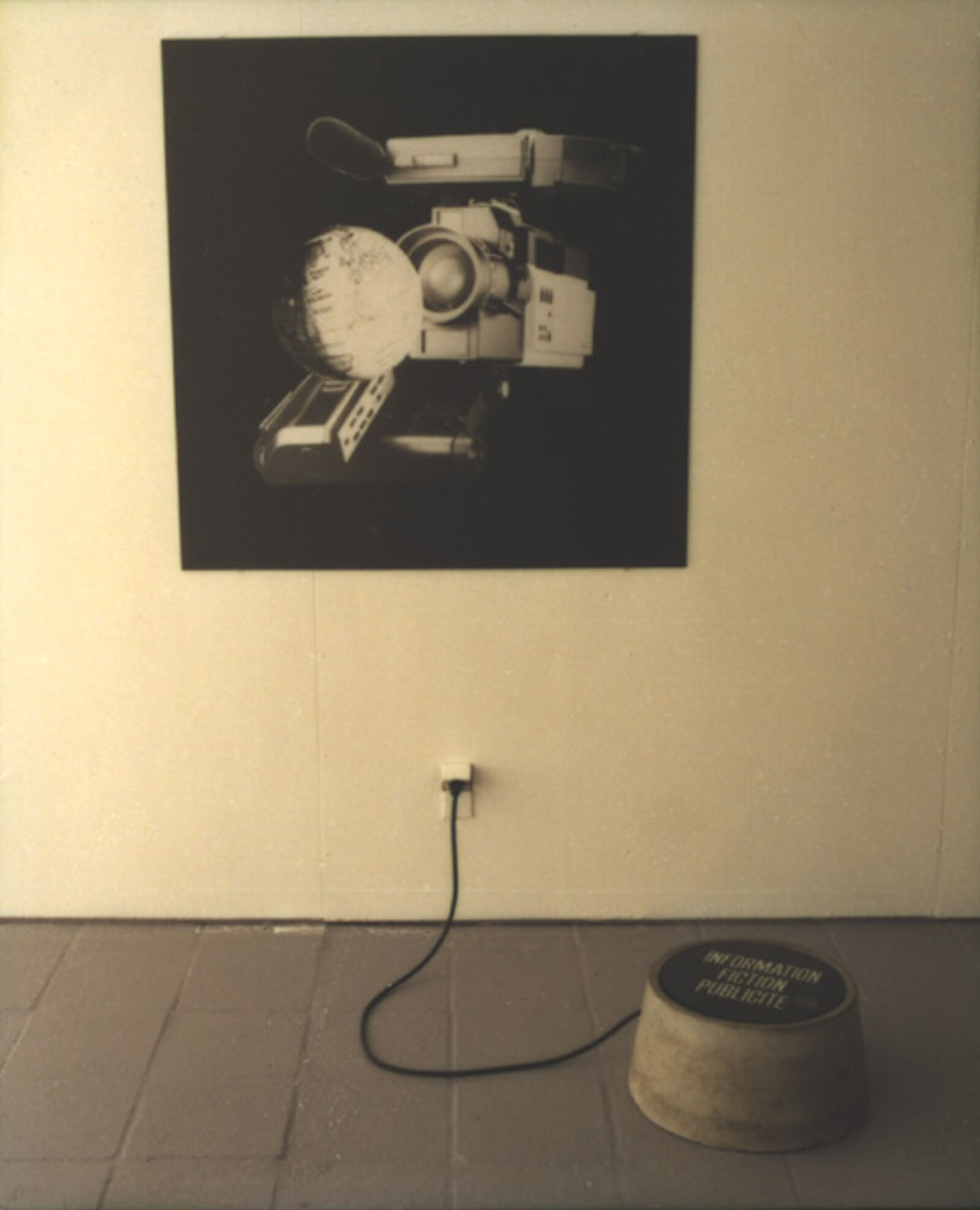IFP (Information Fiction Publicité) "Installation"
14.05–05.06.1988
de Appel, Prinseneiland 7, Amsterdam
de Appel, Prinseneiland 7, Amsterdam

f.l.t.r.: Ektaskope, 1987; titel onbekend; Commande a distance, 1985; Credit (IFP), 1987; Le Plot (IFP), 1985; Generique, 1984
© Pieter Boersma, Amsterdam
© Pieter Boersma, Amsterdam

Title unknown
© Pieter Boersma, Amsterdam
© Pieter Boersma, Amsterdam

Credit (IFP), 1987
© Pieter Boersma, Amsterdam
© Pieter Boersma, Amsterdam

front: Le Plot (IFP), 1985; back: Generique, 1984
© Pieter Boersma, Amsterdam
© Pieter Boersma, Amsterdam
‘Not so long ago an injunction was served about copyright on the sky. Outraged, KLM had taken procedings against another airline company that, like them, had dared to use the cloudy skies in an advertising campaign. KLM won, partly thanks to the argument that it was 'the first airline in the world', and from then on it could 'claim' the sky. When the French group of artists IFP shows transparent photos of cloudy skies in light boxes the critic Jerôme Sans can write with justification that they are using one of the most 'overworked' media images in existence. IFP is aware of this: by using and repeating a cliché, one's attention focuses not on the specific image that is presented, but on the way in which it is presented. The 'exhibition' becomes the subject of the 'discours', together they comprise a construction in which by means of specific methods and rules and by means of information that often bears a close resemblance to advertizing copy, a fiction is created. That fiction is the individual language of the artist. IFP stands for: 'Information, Fiction, Publicity'. A catalogue put together by IFP on the occasion of their exhibition in the ARC, Museum of Modern Art, in Paris, is chock-full of texts about the cloudy sky written by Ad Reinhardt, Carl Andre, Merleau-Ponty, Cézanne, Matisse, Malevich and Klein. As a motto for the part of the catalogue that is called 'exposition (the French word ‘exposition’ means not only exhibition but also exposure to light, exposure time) a sentence by Wittgenstein: 'you can’t construct clouds'. Everything in this catalogue seems to be between quotation marks because everything deals with presentation, with how things are exhibited, with frames and frameworks, and with the catalogue as a part of what is to be presented. It is moreover striking how many European artists are concerned with the analysis of display: the projectors with light beams by Mucha, Pitz, Leccia, the plinths by Vermeiren, the frames of Vercruysse and Dujourie, they all point to an analytical approach to the conditions under which art is presented. An approach that as far as content is concerned is related to the conceptual art of the end of the sixties, but which is presented with a completely different vocabulary. It also looks as though the Europeans are more concerned with contexts, conditions and the space itself while in America artists like Koons, McCollum or Steinbach give a new twist to the art product so that it either gets an ironic or kitsch character or is made into a fiction (a football, a pack of cornflakes) with the idea of commenting on the commercialization of art which has increased considerably, especially in the U.S.. IFP has a place in between these two atmospheres: in an exhibition in the galerie Hussenot in Paris they made a large mural of a stylized hand holding an empty frame with rounded corners. It was obviously a message, but there was no text to back up the image. Only after looking longer did it become clear that it referred to a drawing of a universally known French advertisement: the campaign for the 'Carte Bleue', one of the credit cards that is current in France. To reveal emptiness IFP didn't need a cloudy sky here: the gallery wall was sufficient to do that.’ ('Exhibition between quotation marks', Newsletter De Appel, 3 (1988) 2.)